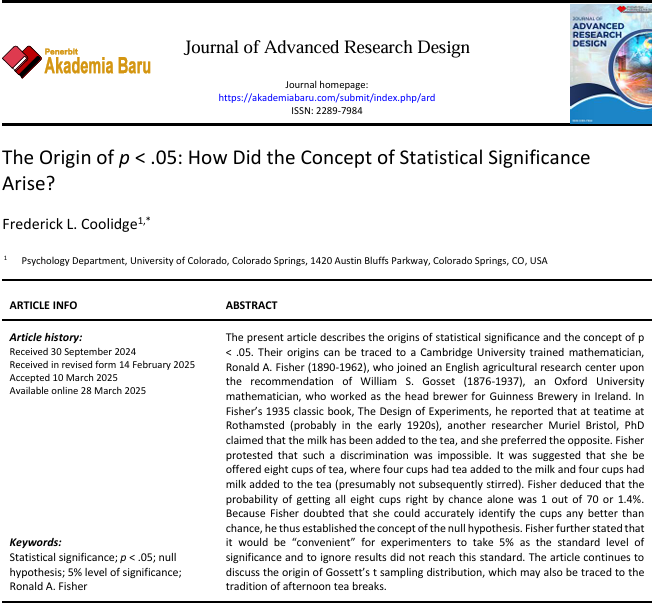The Origin of p < .05: How Did the Concept of Statistical Significance Arise?
DOI:
https://doi.org/10.37934/ard.126.1.131134Keywords:
5% level of statistical significance, p < .05, null hypothesis, 5% level of significance, Ronald A. FisherAbstract
The present article describes the origins of statistical significance and the concept of p < .05. Their origins can be traced to a Cambridge University trained mathematician, Ronald A. Fisher (1890-1962), who joined an English agricultural research center upon the recommendation of William S. Gosset (1876-1937), an Oxford University mathematician, who worked as the head brewer for Guinness Brewery in Ireland. In Fisher’s 1935 classic book, The Design of Experiments, he reported that at teatime at Rothamsted (probably in the early 1920s), another researcher Muriel Bristol, PhD claimed that the milk has been added to the tea, and she preferred the opposite. Fisher protested that such a discrimination was impossible. It was suggested that she be offered eight cups of tea, where four cups had tea added to the milk and four cups had milk added to the tea (presumably not subsequently stirred). Fisher deduced that the probability of getting all eight cups right by chance alone was 1 out of 70 or 1.4%. Because Fisher doubted that she could accurately identify the cups any better than chance, he thus established the concept of the null hypothesis. Fisher further stated that it would be “convenient” for experimenters to take 5% as the standard level of significance and to ignore results that did not reach this standard. The article continues to discuss the origin of Gossett’s t sampling distribution, which may also be traced to the tradition of afternoon tea breaks.
Downloads























